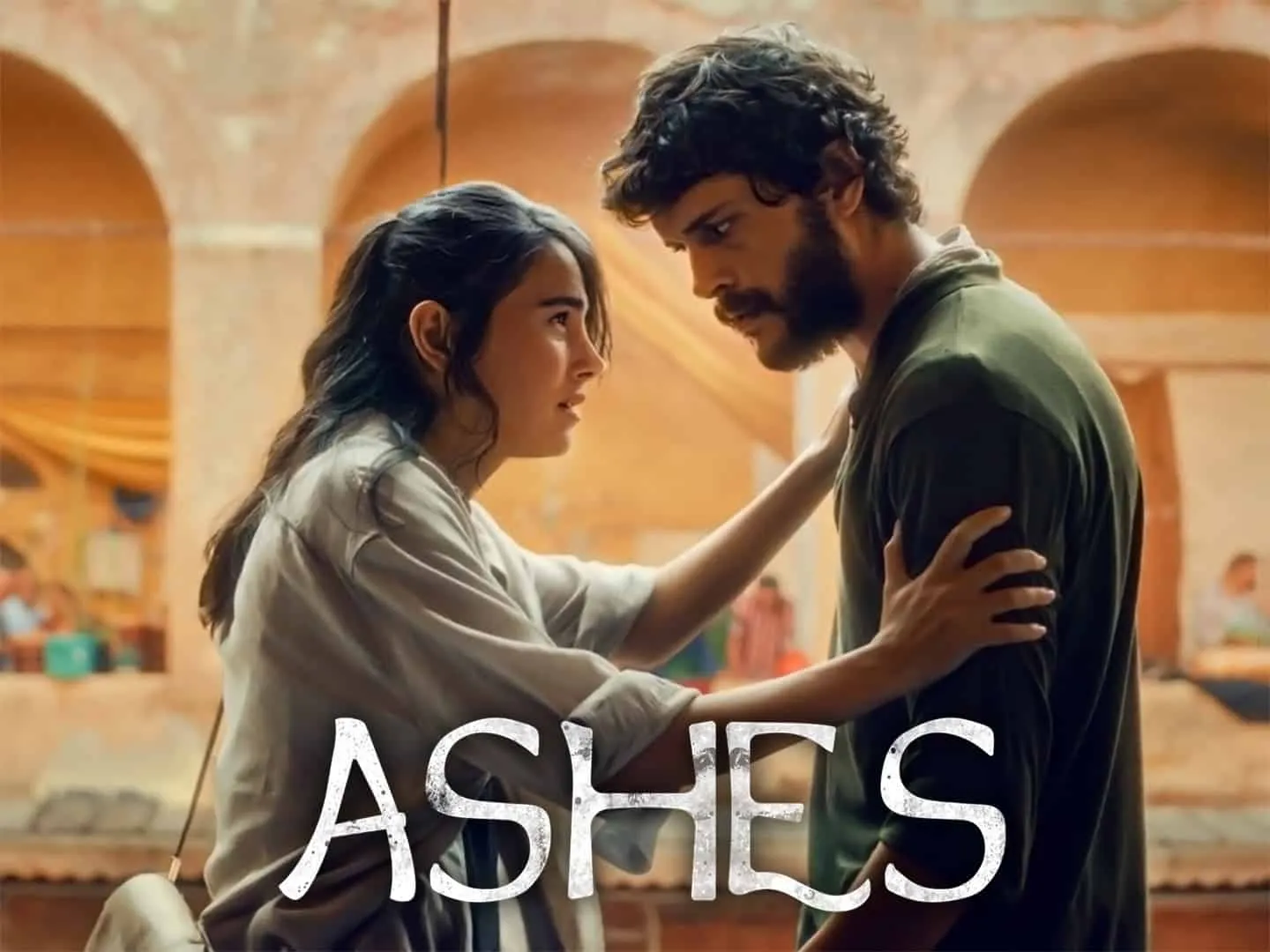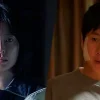Funda Eryigit and Alperen Duymaz, known for their roles in Son Yaz, share the screen again in this film, originally titled Kül and now streaming on Netflix. With its intense romance and daring scenes, this movie easily ranks among the steamiest options available on the platform.
The plot revolves around Gökçe (Eryigit), a wealthy woman from Istanbul who stumbles upon a peculiar manuscript that stands out among the many submissions her husband Kenan (Mehmet Günsür) receives as a book publisher.

Despite running her boutique and raising their son, Ege, Gökçe still makes time to assist Kenan in selecting which authors to publish.
A Mysterious Book Disrupts Gökçe’s Life
Everything in Gökçe’s seemingly comfortable world takes an unexpected turn because of this manuscript. After spending a decade in an uninspiring marriage filled with material wealth but lacking passion, she finds herself drawn to the anonymous book titled Ashes.
The story describes a woman’s fiery romance with a man referred to only as ‘M,’ awakening feelings Gökçe thought she had long lost. Her curiosity intensifies when she notices that the novel references real places in Balat and vividly details its central character.
Realizing the book is more than just fiction, she becomes determined to uncover the truth behind it—and to experience the same passion herself.
Ashes Ending Explained
Gökçe immerses herself in the fantasy she has been longing for. She tracks down Metin Ali, also known as ‘M’ (Duymaz), who matches the book’s description—he is a carpenter in Balat, has distinctive tattoos, and owns a breathtaking rooftop with a stunning city view.
What begins as a cautious flirtation escalates into an intense physical relationship. However, the secrets they are hiding from each other prove too heavy to ignore. When Gökçe eventually reaches the final pages of the manuscript, she is shaken to discover that the female protagonist dies—and that ‘M’ is accused of her murder.
If everything else in the book mirrors reality so closely, why wouldn’t this part be true? Yet, if the woman in the story truly died, who wrote the book? Struggling to distinguish fact from fiction, Gökçe spirals into a psychological breakdown. “I mix everything up,” she confesses to Metin, completely disoriented.
The Manuscript and Kenan’s Discovery
That same day, Gökçe hands the manuscript back to Kenan, dismissing it as unsuitable for publication. She criticizes it as poorly written, and “overdramatic,” and says the ending is “just dull.” However, Kenan has already sensed that this book has played a role in his wife’s sudden change in behavior.
Wanting to understand what is happening, he decides to read it himself—and quickly pieces together the truth. Determined to investigate further, Kenan manages to trace the manuscript’s origin to an address where it was sent from a year earlier.
When he arrives, a woman named Reyhan Akkaya opens the door, claiming she knows nothing about the book. However, she reveals that at the time, her sister Duygu was living there. Just like in the book, Duygu is no longer alive, but the details surrounding her death remain unclear.
Kenan then orchestrates a confrontation between himself, Gökçe, and Metin. Under the pretense of delivering a bookcase, Metin arrives at their home, where the truth is about to be revealed at the dinner table.
Confrontation and Chaos
During the tense dinner, Kenan accuses Gökçe of suffering from fictophilia, a condition where a person falls in love with a fictional character. He insists that this is a severe disorder. He also exposes Metin’s past, revealing that he led Duygu into a romance, only to betray her by sleeping with her sister.
This heartbreak, Kenan claims, pushed Duygu to her demise. Desperate for answers, Gökçe asks Metin directly if he is responsible for her death. Metin, enraged by the accusations, denies them.
He insists that Duygu was infatuated with him to the point of obsession and had a history of suicide attempts, particularly when she neglected her medication. The discussion is abruptly cut short when the tension explodes into physical violence.
As the two men fight, glass shatters across the room, breaking the fragile illusion of control. Emotionally wrecked, Gökçe remains seated at the table, her face blank, lost in a reality that no longer makes sense to her. She watches, detached from the chaos, as if questioning whether any of it is real.
Regardless of whether it is real or imagined, the struggle between Kenan and Metin leads them into the swimming pool. Locked in battle, Metin stabs Kenan with a piece of broken glass, leaving the audience to assume the worst.
The Mystery of Ashes Deepens
At that moment, the film abruptly cuts, repeating the words that introduced the story: “What is reality and what is fiction?” It is now clear that these words belong to Taner Alpar, a writer introduced earlier at Gökçe and Kenan’s 10th wedding anniversary.
During that event, Kenan had advised him to move away from writing autobiographical stories and seek fresh inspiration. Taner appears to have taken that advice. His latest work, titled Ashes (Kül)—the same as Duygu’s manuscript—is now being presented at a book launch.
“Reality could be nothing more than a lie someone created. Don’t you think so? Maybe we are all living inside another person’s dream,” Taner muses. During the event, an audience member questions why he chose to make his protagonist die by suicide.
In response, he draws a parallel with Leo Tolstoy’s Anna Karenina, in which the main character meets the same tragic fate. Another person asks about his inspiration and writing process.
Taner admits, “I realized I was writing too much about myself,” echoing Kenan’s words from earlier in the film. Sitting in the front row, Taner’s wife—who happens to be Gökçe’s friend—smiles knowingly. “Imagine stepping into someone else’s mind, seeing the world from their perspective.
That’s how Ashes came to life,” Taner adds.
A Haunting Final Scene
As the film nears its end, Gökçe is seen at a train station. Is she contemplating jumping, like Anna Karenina? The scene fades to black, leaving this question unanswered. What does this ambiguous ending imply? The possibilities are endless. One interpretation suggests that everything we witnessed truly happened.

Duygu sent the manuscript before taking her own life, setting off a chain of events that led to Gökçe and Metin’s affair, followed by Kenan’s death. Taner, upon learning about this tragedy, saw an opportunity to craft a new book inspired by these real-life events.
Taner has always been drawn to authentic stories, having spent years writing about his own experiences. During the anniversary party, he even mentioned finding inspiration in newspaper articles.
His wife’s subtle smile at the book launch, along with the indirect reference to Kenan’s past criticisms of his writing, hints at a personal motive—possibly revenge. Yet, another possibility emerges. What if Taner had known about Duygu’s story and was the true author of the original Ashes manuscript?
Through his wife’s connection to Gökçe, he might have been aware of the marital issues she faced. Though he couldn’t have predicted the precise way events would play out, it’s possible he wrote the story as an experiment, only for it to take on a life of its own.
And then there’s the train station. Does Gökçe jump? Considering that her son is holding her hand, it seems unlikely. If the events in the film were real, her husband is gone, and she now faces the challenge of rebuilding her life—though not necessarily with Metin.
But what if everything was just fiction? If so, what we are witnessing might be the ending of Taner’s book. If that is the case, then like Anna Karenina, Gökçe is standing on the edge, moments away from her final decision.



